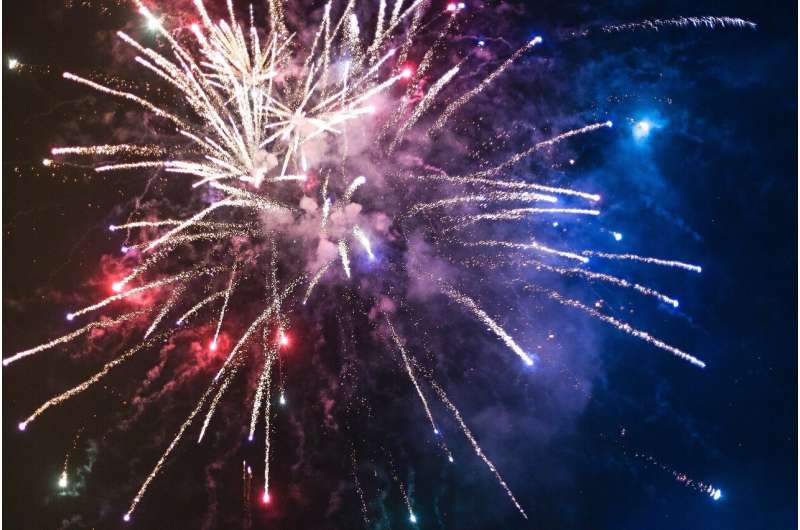This article has been reviewed according to Science X's editorial process and policies. Editors have highlighted the following attributes while ensuring the content's credibility:
fact-checked
peer-reviewed publication
trusted source
proofread
Study draws lessons about drug policy by examining history of fireworks regulation, prohibitions

Policymakers worldwide wrestle with whether to prohibit products that can harm consumers. Prohibitions can reduce consumption and consumption-related harms, but also create other problems, including illegal markets. In a new study, researchers have reviewed the history of fireworks regulations, sales, and harms, then contrasted these with those for cannabis. They found a surprising number of similarities as well as some key differences between the two.
They conclude that overall, prohibitions on access to fireworks by the general public work from a public health perspective (e.g., reducing eye injuries), but not well enough for bans to be enacted and maintained in all times or places.
The study, by researchers at Carnegie Mellon University, is published in the International Journal of Drug Policy.
Fireworks and drugs are both consumer goods that harm a large enough minority of their users or cause enough harm to third parties that in some times and places, governments have prohibited the public from buying or using them. Those prohibitions have waxed and waned over time and vary across countries.
In this study, researchers compared cannabis to fireworks—a risky pleasure that is not generally viewed as a vice but that has been subject to prohibition. Specifically, they contrasted the two with regard to laws, markets, and some health and other harms (e.g., injuries and deaths, environmental damages), considering studies from around the world but primarily in the United States.
"Reflecting the extent to which vices have drawn more attention than mere risky pleasures, our search for the phrase 'drug policy' yielded 187,000 hits, while our search for the phrase 'fireworks policy' yielded just 26," says Jonathan P. Caulkins, professor of operations research and public policy at Carnegie Mellon's Heinz College, who led the study.
Many parallels exist between fireworks and cannabis in legal approaches, harms to users, harms to others, and other externalities. In the United States, the timing of prohibitions has been similar, with those related to fireworks being imposed a little later (mid versus early 20th century) and repealed a little sooner (late 20th century and first decades of 21st century). Internationally, countries that are strictest with fireworks are not always strictest with drugs and vice versa.
By some measures, harms caused by fireworks and cannabis were of roughly similar magnitude, the study found: In the last years of U.S. cannabis prohibition, there were about 10 emergency department (ED) events per million dollars spent on both fireworks and illegal cannabis, but fireworks generated roughly three times as many ED events per hour of use.
The study also identified differences between the two, finding that punishments have been less harsh for violating fireworks prohibitions; fireworks consumption tends to be heavily concentrated in a few days or weeks per year; and illegal distribution is primarily of diverted legal products, not of illegally produced materials.
The authors conclude that the absence of hysteria over fireworks problems and policies suggests that societies can address complex tradeoffs involving risky pleasures without excessive acrimony or divisiveness.
However, the conflicted and time-varying history of fireworks bans also shows that difficulty balancing freedoms and pleasure with harms to users and others is not restricted to drugs or other vices. Use-related harms fell when fireworks were banned and rose when those bans were repealed, so fireworks prohibitions can be seen as working from a public health perspective, but not well enough for bans to be used in all times or places.
"In light of our findings, there may be value in studying prohibitions beyond those pertaining to drugs (including alcohol) and other vices (such as gambling)," suggests co-author Kristina Vaia Reimer, who worked on the study during her master's degree program in public policy at Carnegie Mellon's Heinz College. "The markets for illegal drugs have been singularly important, but an exclusive focus on drugs and other vices may limit opportunities to learn more general lessons about prohibitions and illegal markets."
More information: Jonathan P. Caulkins et al, When prohibition works: Comparing fireworks and cannabis regulations, markets, and harms, International Journal of Drug Policy (2023). DOI: 10.1016/j.drugpo.2023.104081





















